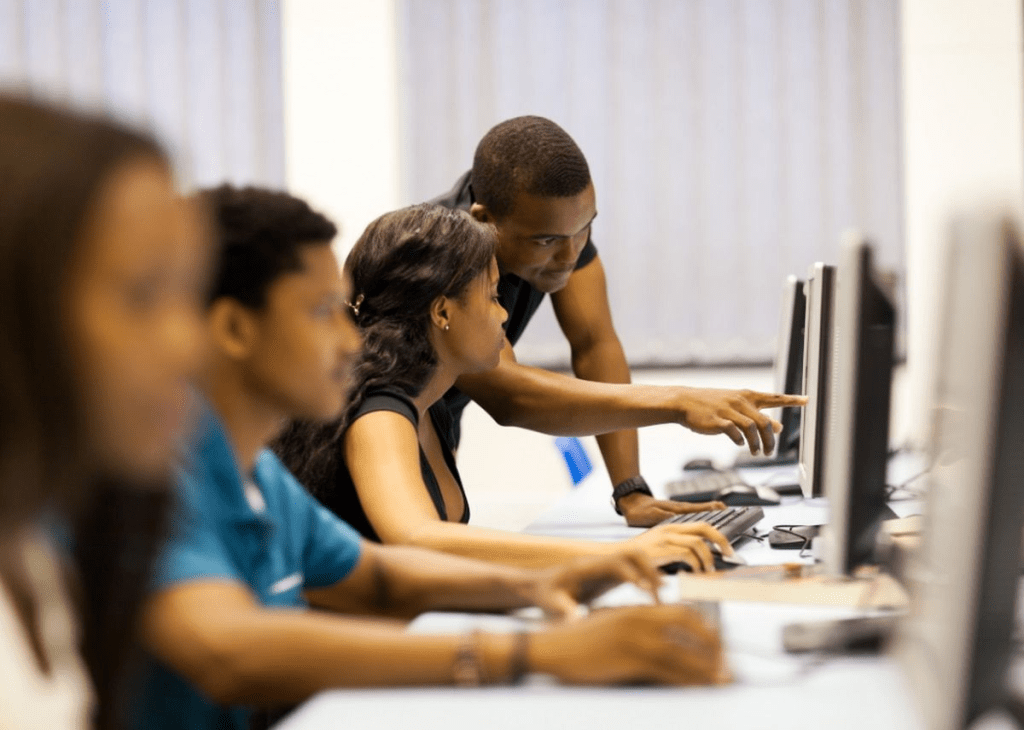
The tertiary education sector in Nigeria is beset by a range of challenges, including overcrowded classrooms, outdated curricula, limited learning resources, and a shortage of qualified educators. According to the National Bureau of Statistics (NBS), only about 10% of eligible students in Nigeria are enrolled in tertiary education, leaving a large portion of the population without access to higher learning. This gap is further deepened by insufficient infrastructure and funding, which prevent universities from accommodating the growing number of students seeking admission.
One of the strongest indicators of the lack of accessibility is the leaky education pipeline, a term used to describe the progressive reduction in educational access as students advance through each level of the education system. In Nigeria, we see a sharp decline in attendance rates as students move up the educational ladder. While 68% of children attend primary school, only 54% make it to secondary school, and just 12% can access tertiary education.
Several factors contribute to these low tertiary enrolment rates, the most significant being the high cost of education. University tuition fees range from $125 to $3,500 annually—an amount out of reach for many families, particularly in a country where over 33% of the population lives on less than $2 a day.
Moreover, the country’s insufficient number of tertiary institutions which is under 300 and meant to serve more than 1.8 million prospective students each year means that competition for university spots is fierce. The expiration of UTME results each year makes it even harder to secure higher education.
The Role of Technology in Closing the Gap
Despite these challenges, technology presents an opportunity to revolutionise education in Nigeria by expanding access and improving the quality of education. E-learning platforms, virtual classrooms, and mobile-based learning tools can help overcome infrastructure limitations and offer students in underserved regions access to world-class educational content.
Nigeria’s mobile penetration is a key factor in this transformation. With over 140 million active mobile phone lines, mobile technology presents a unique opportunity to reach students across the country. For example, the National Open University of Nigeria (NOUN), launched in 1983 and relaunched in 2001, has seen remarkable growth, now serving approximately 580,000 students across 78 study centres. This serves as a good example of how technology can bridge the access gap, providing flexible learning options for students who would otherwise be excluded from traditional university education.
Platforms like Miva Open University and AltSchool are also changing the landscape of education in Nigeria. Founded in 2023 by the edtech company uLesson, Miva Open University aims to provide affordable, accessible, and high-quality education to students nationwide. Licensed by the National Universities Commission (NUC), the university offers undergraduate and postgraduate programs in fields like computer science, business, and healthcare. With over 3,792 students matriculated during its second matriculation ceremony, Miva is making significant strides in offering flexible learning opportunities to Nigerian students.
AltSchool Africa, another key player, is focused on developing the technical skills required for the digital economy. Offering online courses in areas like software engineering, product management, data science, and digital marketing, AltSchool Africa has trained over 60,000 learners across the continent since 2021. It provides flexible learning options, including diploma programs and accelerated courses, and collaborates with industry partners to offer real-world learning experiences.
MOOCs (Massive Open Online Courses) and Learning Management Systems (LMSs) further extend these opportunities by providing access to courses from top universities and institutions around the world.
Technology Use Cases: Advantages and Challenges
Technology has the potential to break down many of the barriers facing Nigerian education, but its implementation is not without challenges. On the one hand, digital platforms can help alleviate some of the most pressing issues like overcrowded classrooms and the shortage of qualified educators. On the other hand, there are significant hurdles to overcome. For many Nigerians, access to the internet remains limited, especially in rural areas. Only 39% of Nigerians have regular internet access, according to DataReportal’s 2024 Digital Report. In addition, the cost of mobile data and unreliable power supply makes it difficult for many students to engage with online learning platforms.
Moreover, digital literacy among both students and educators remains a barrier to technology adoption. Without proper training and support, both students and teachers may struggle to use digital tools, which can undermine the potential benefits of these technologies.

Bridging the Gap: The Way Forward
For Nigeria to leverage the power of technology in education, stakeholders must invest in digital infrastructure and make internet access more affordable. Public-private partnerships could play a critical role in supporting initiatives that provide free or subsidised data for educational purposes, making online learning more accessible for students across the country.
In addition, alternative education routes, such as vocational training and specialised institutes, offer another way to address the gap between secondary and tertiary education. The Revised National Policy on Education recognises vocational education as a legitimate form of tertiary education, with the Federal Government responsible for accrediting and regulating these institutions to meet the nation’s human capital needs.
Universities also have an important role to play in this transformation. By integrating digital tools into their curricula and providing training programs to improve digital literacy, institutions can help ensure that both students and educators are equipped to thrive in a digital learning environment. Localised content that speaks to the specific needs of Nigerian students can further enhance the relevance and effectiveness of digital education.
Conclusion: A Brighter Future for Nigerian Education
Access to education remains one of Nigeria’s largest challenges, especially within the tertiary education sector. Many young adults encounter systemic barriers that prevent them from fully engaging with and benefiting from higher education. However, technology is emerging as a powerful tool that could help bridge these gaps, offering the potential to transform Nigeria’s tertiary education system.
By embracing technology, Nigeria’s tertiary education system has the potential to overcome many of its current challenges and provide more students with the opportunity to excel academically and professionally. While the path to a fully digital education system may be complex, the rewards which include more skilled, competitive workforce and greater access to learning opportunities, are within reach.
The journey may be long, but with the right investments in infrastructure, digital literacy, and innovative solutions, we can create an education system that empowers students to achieve their goals and contribute to the country’s development. The future of Nigerian education is bright, and technology will play a pivotal role in shaping that future.
